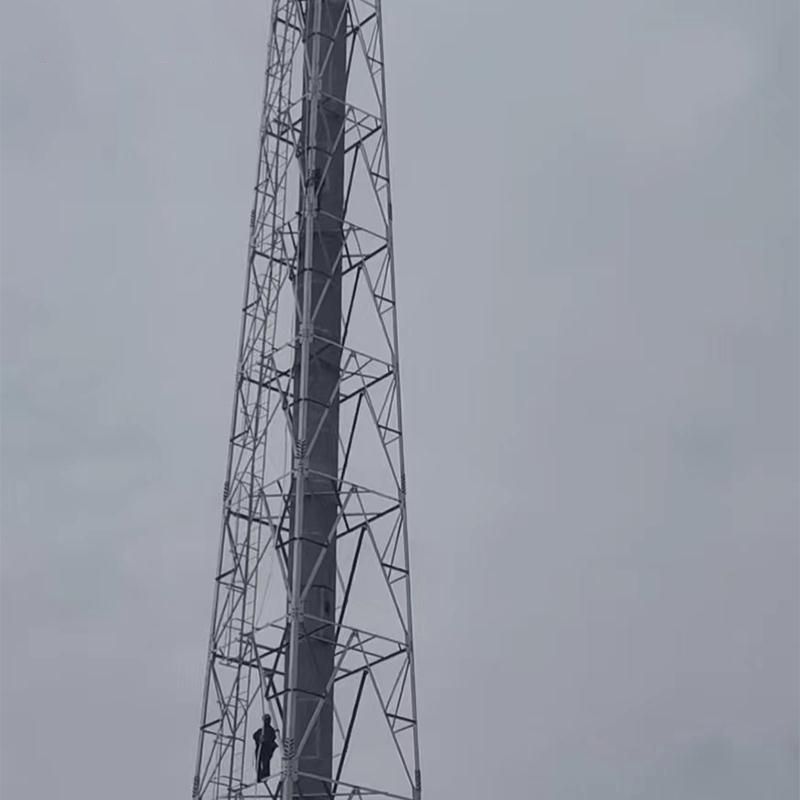Scaling Heights: Challenges and Solutions in Tower Chimney Maintenance and Inspection
2023-11-21
Introduction:
Tower chimneys, with their imposing stature on the industrial skyline, represent not only symbols of progress but also engineering marvels. However, maintaining and inspecting these towering structures present a unique set of challenges that require precision, expertise, and a commitment to safety. In this exploration, we delve into the main challenges associated with the maintenance and inspection of tower chimneys and the innovative solutions employed to overcome these hurdles.
1. Height and Accessibility:
- Challenge: The towering height of chimneys poses a significant challenge for accessibility during maintenance and inspection. Traditional methods may be impractical or unsafe, making it challenging for technicians to reach various sections of the chimney.
- Solution: Advanced access solutions, such as drones and robotic inspection devices, are increasingly employed to navigate the heights of tower chimneys. These technologies provide remote access to inspect hard-to-reach areas, minimizing the need for extensive scaffolding or manual labor.
2. Corrosion and Material Deterioration:
- Challenge: Tower chimneys are often exposed to harsh environmental conditions, leading to corrosion and material deterioration over time. Identifying and addressing these issues is crucial to maintaining the structural integrity of the chimney.
- Solution: Regular inspections, including visual assessments and non-destructive testing (NDT) techniques, help identify signs of corrosion or material degradation. Protective coatings and corrosion-resistant materials are applied during maintenance to mitigate the impact of environmental factors.
3. Structural Integrity and Foundation Concerns:
- Challenge: Ensuring the structural integrity of tower chimneys, especially in the face of external forces like wind and seismic activity, is a significant challenge. Foundation settlement or structural shifts can compromise stability.
- Solution: Detailed structural assessments, including finite element analysis, are conducted to evaluate the stability of the chimney. Reinforcement techniques, such as the installation of guy wires or additional supports, may be implemented to enhance structural integrity.
4. Erosion of Internal Liners:
- Challenge: Internal liners, designed to protect the chimney from the corrosive effects of emissions, can experience erosion over time. This erosion may compromise the efficiency of the chimney and increase the risk of corrosion.
- Solution: Regular inspections of internal liners are conducted, and advanced imaging technologies may be employed to assess the extent of erosion. Liner repairs or replacements are executed as needed to maintain optimal performance.
5. Monitoring Emission Levels:
- Challenge: Meeting environmental regulations requires accurate monitoring of emission levels. Ensuring the chimney continues to comply with standards poses a challenge in terms of instrumentation and data accuracy.
- Solution: Continuous emission monitoring systems (CEMS) are integrated into the chimney design to track pollutant levels in real-time. Regular calibration and maintenance of these systems are essential to ensure accurate and reliable data.
6. Safety During Maintenance:
- Challenge: Performing maintenance and inspections at significant heights involves inherent safety risks. Ensuring the safety of personnel is a top priority.
- Solution: Rigorous safety protocols, including the use of safety harnesses, fall protection systems, and adherence to industry safety standards, are implemented during maintenance activities. Technological innovations, such as virtual reality (VR) training, enhance safety awareness and preparedness.
7. Integration of Advanced Technologies:
- Challenge: Embracing and integrating new technologies into existing chimney structures can be a challenge due to compatibility issues or the need for retrofitting.
- Solution: Incremental technology adoption, phased upgrades, and careful planning facilitate the seamless integration of advanced technologies. Retrofitting solutions are designed to enhance the capabilities of existing chimneys without compromising their structural integrity.
8. Environmental Impact and Sustainability:
- Challenge: Balancing maintenance activities with environmental responsibility is crucial. Disposal of materials and waste generated during maintenance can pose environmental challenges.
- Solution: Sustainable practices, such as recycling materials and minimizing waste, are integrated into maintenance procedures. Environmental impact assessments guide decision-making, ensuring that maintenance activities align with sustainability goals.
Conclusion:
Maintaining and inspecting tower chimneys is a testament to the intersection of engineering expertise, safety protocols, and technological innovation. As industries evolve, the challenges associated with these towering structures are met with ingenuity and a commitment to responsible practices. The journey to scale the heights of maintenance and inspection is marked by a continuous pursuit of efficiency, safety, and environmental stewardship.



